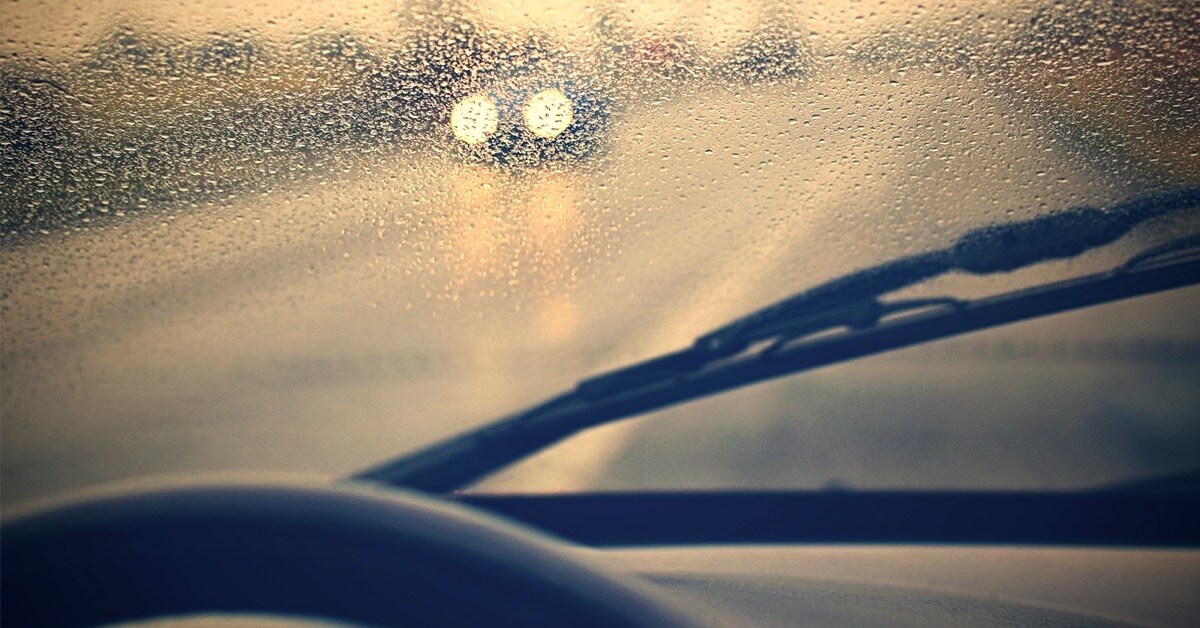UAE’s Surprise Downpours: Car Care Tips to Avoid Flood Damage
Protecting Your Car in The UAE rains: A Step-by-Step Guide

While Dubai is synonymous with sunshine and sprawling deserts, the city has recently witnessed a climate twist – heavy downpours. These unexpected showers have caused some temporary inconveniences, but it has also highlighted Dubai's remarkable resilience and adaptability.
While these downpours might be a change from the usual desert heat, they pose a significant threat to a petrol head’s most prized possessions – cars.
This blog post equips you, with the knowledge and steps to protect your vehicle from rain or flood damage. We'll delve into the challenges posed by floods, explore preventative measures, and provide a detailed recovery plan to get your car back on the road.
How Floods Impact Your Car?
Floods aren't just an inconvenience; they pose a serious threat to your car's well-being. Here's why:
Electrical Nightmares: Floodwater is a recipe for electrical gremlins. When it seeps into your car's interior or engine compartment, it can wreak havoc on electrical components, causing everything from flickering lights to a complete system meltdown.
Engine Woes: Water doesn't belong anywhere near your engine. If floodwaters rise high enough, they can enter the engine compartment, causing internal damage and potentially leading to a seized engine – a car owner's worst nightmare.
Interior Havoc: From ruined upholstery to mold and mildew growth, floodwater can wreak havoc on your car's interior. The longer your car stays wet, the more extensive the damage becomes.
Protecting Your Car Before the Downpour
While we can't control the weather, we can take steps to minimize flood damage to our cars by paying heed to weather alerts. Here's what you can do:
Park Smart: When possible, park your car in a high-ground location, like a garage or a designated flood-safe zone. A few extra feet of elevation can make a world of difference in a flood situation.
Flood-Proof Your Garage: If you park in a garage, consider floodproofing measures. Seal gaps around doors and openings with waterproofing compounds to prevent water from entering.
Insurance is Key: Comprehensive car insurance with flood coverage is a lifesaver in these situations. It can provide financial assistance for repairs or even replacement in case of severe flood damage.
Stay Weather-Savvy: Stay updated on weather forecasts and warnings issued by the National Center of Meteorology (NCM). This will give you a heads-up on potential downpours and allow you to take necessary precautions.
From Flood to Fix: A Step-by-Step Guide to Car Flood Recovery
The rain has stopped, but the battle isn't over. Here's how to get your car back on track after a flood:
Safety First: Before you even approach your car, ensure it's safe to do so. If floodwaters are still high or there are downed power lines, wait for the all-clear from authorities.
Assess the Damage: Once it's safe, carefully inspect your car for signs of water intrusion. Check the interior for moisture, including carpets, upholstery, and electrical components. Open the hood and examine the engine compartment for water levels and debris.
Don't Start the Engine: Starting a flooded engine can cause significant internal damage, leading to expensive repairs. Resist the urge to turn the key and focus on drying out the car first.
Use towels or a wet/dry vacuum to remove as much standing water from the interior as possible. Pay close attention to hidden areas like under the seats and in the trunk where water tends to accumulate.
Drying is Key: To prevent mold and mildew growth, thorough drying is essential. Open all the doors and windows to create airflow and consider using fans.
Sunshine Soldier: If the weather permits, park your car in direct sunlight to accelerate the drying process. The sun's natural heat can be a powerful drying agent.
Professional Help for Deep Drying: For deep-seated moisture, especially in seat cushions, consider professional car interior cleaning services. They have specialized equipment and techniques to ensure thorough drying and prevent mold growth.
Pro Tip: You can book an appointment with TyrePlus for getting your car serviced post the heavy downpour.
Don't Forget the Electronics: Floodwater exposure can wreak havoc on your car's electrical systems. Once the interior is dry, check all electronic components like lights, wiper blades, audio system, and power windows for signs of malfunction. If you notice any issues, don't hesitate to consult a qualified auto electrician for a thorough inspection and repairs.
Beyond the Basics: Essential Post-Flood Car Maintenance
While drying and initial checks are crucial, there are additional steps to ensure your car recovers fully from a flood:
Change the Fluids and Filters: Floodwaters can contaminate your car's engine oil, transmission fluid, brake fluid, and coolant. These contaminants can lead to further problems down the line. Schedule an oil change and replace all essential fluids with fresh ones to ensure optimal performance and prevent long-term damage.
Air Filter Attention: The air filter plays a vital role in protecting your engine from dirt and debris. Floodwaters can clog the air filter with mud and other contaminants. Replace the air filter with a new one to ensure clean airflow and optimal engine performance.
Brake Check: One of the most critical safety components, your brakes deserve special attention after a flood. Floodwater can compromise the braking system's effectiveness. Have a qualified mechanic inspect your brakes, including brake pads, rotors, and calipers, to ensure they function properly.
Undercarriage Inspection: Don't forget the unseen hero – your car's undercarriage. Floodwaters can cause rust and damage to exposed metal components. Schedule an undercarriage inspection to identify any potential issues and have them addressed promptly to prevent further corrosion.
Learning from the Deluge: Flood Prevention Measures for the Future
While we can't predict the weather, we can take proactive steps to minimize heavy rain damage to our cars in the future:
Invest in Flood Barriers: For flood-prone areas, consider investing in portable flood barriers. These can be sandbags or inflatable water dams placed around your car to create a temporary barrier against rising floodwaters.
Weatherproof Your Car: While not a foolproof solution, waterproof car covers can offer some protection from light rain or splashes. Choose a breathable car cover to prevent moisture buildup underneath.
Stay Informed, Stay Prepared: Sign up for weather alerts and flood warnings. This will give you valuable time to move your car to higher ground or take other preventative measures before the storm hits.
Caring for cars in flood situations requires prompt action and careful attention to detail. By following these practical steps, residents in the UAE can protect their vehicles and minimize the impact of flood damage. Remember to prioritize safety and consult professionals when necessary to ensure thorough assessment and repairs. With proactive measures and timely interventions, car owners can safeguard their vehicles and navigate through unexpected weather challenges with confidence.
Discover More Blog Topics:
